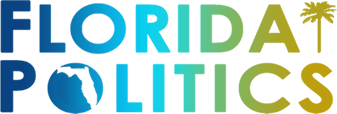
Boynton Beach Democratic Sen. Lori Berman introduced a new bill (SB 1646) to enhance the Sunshine State’s water quality and protect public health.
The Legislature has found that the adverse health effects of lead exposure in children and adults have been well documented, and no safe blood-lead level in children has been identified.
Lead accumulates within the body and can be ingested in various ways, including water sources used for drinking, food preparation, or cooking. The bill further states that all lead sources should be controlled or eliminated to prevent lead poisoning.
According to the Centers for Disease Control and Prevention (CDC), lead inhibits children’s bodies from absorbing essential minerals crucial for proper brain and nerve development, including iron, zinc, and calcium. Children often show no signs of lead poisoning until they reach school levels, and the CDC further notes that lead exposure in early childhood is connected to future criminal activity in adulthood.
The Office of Program Policy Analysis and Government Accountability (OPPAGA) would be required to conduct a study into the prevalence and effects of lead in Florida’s drinking water in all public facilities that receive state funding.
The study must include the amount of lead piping in public facilities, the health effects of lead exposure, the financial impact, and the cost of providing point-of-use water filters.
OPPAGA would consult with other entities while conducting the study and would be required to submit its findings to the Governor and the Legislature by Jan. 1, 2026.
The Florida Department of Environmental Protection‘s water quality improvement grant program would be required to prioritize projects with maximum nutrient load reduction, project readiness, cost-effectiveness, and location in special flood hazard areas.
The Florida Department of Health would be required to develop a training program for health care professionals to improve the diagnosis, treatment, and reporting of harmful algal bloom-related illnesses.
The training program must contain separate components to address red tide and blue-green algae and include guidelines, protocols, and related training programs to protect the health of persons who regularly work near harmful algal blooms.
The Fish and Wildlife Conservation Commission would be required to consider the work of the Florida Red Tide Mitigation and Technology Development initiative to develop a model for implementing an early warning system for red tides. The model would need to be deployed by July 1, 2027.
After development, the water management district and each county and municipality would be required to provide a schedule for implementing the plan within their respective jurisdictions, including timelines of completion and anticipated fiscal impacts.
Furthermore, the Department of Agriculture and Consumer Services and the South Florida Water Management District would continue to work to introduce measures that reduce the nitrogen level in Lake Okeechobee and improve water quality in the Upper St. Johns River Basin. They must regularly monitor and report on best management practices and total maximum daily loads.
If passed, the bill would come into effect upon becoming law.




One comment
GeeWoo
February 28, 2025 at 1:28 pm
Let’s get rid of the neurotoxin municipalities add the our water too! It’s almost like they want the mass to have low IQs?!?
Comments are closed.